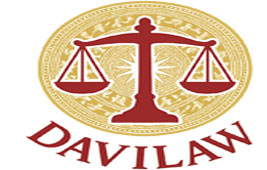Conversion of Business Entity Type
1. Concept and Forms of Business Entity Conversion
When registering a business, the first step is to determine the type of business entity the company wants to operate as. There are several situations that may lead to a change in entity type. During business operations, some companies experience changes in personnel structure or investors, which may result in not meeting the required conditions to maintain the original business entity type. As a result, the company is forced to convert into a more appropriate business entity type. For example, a limited liability company (LLC) with two or more members may convert into a single-member LLC when there is only one contributing member. Another case is when a business wants to change its entity type during operation to adjust its management structure or expand its size.
Business conversion is understood as the process of reorganizing the original business entity structure into another business entity type to suit its development scale and ensure continued operation.
According to the provisions of the current Enterprise Law, the following forms of business entity conversion are permitted:
- Conversion of a limited liability company (LLC) into a joint-stock company
- Conversion of a joint-stock company into a single-member limited liability company (LLC)
- Conversion of a joint-stock company into a limited liability company with two or more members
- Conversion of a sole proprietorship into a limited liability company, joint-stock company, or partnership
- Conversion of a single-member limited liability company into a limited liability company with two or more members
- Conversion of a limited liability company with two or more members into a single-member limited liability company.
2. Certain Cases of Business Entity Conversion
For a Single-Member Limited Liability Company (LLC):
- Conversion occurs when the owner of the company transfers, donates, or gifts a portion of their contributed capital in the company to one or more individuals;
- The company accepts one or more new members.
For a Limited Liability Company (LLC) with Two or More Members:
- The company fails to meet the required condition of having between 02 to 50 members, either individuals or organizations;
- According to the resolution or decision of the Member Council.
For a Joint-Stock Company:
- The company fails to meet the required condition of having at least 03 shareholders, either individuals or organizations;
- According to the resolution or decision of the General Meeting of Shareholders.
For a Sole Proprietorship:
- Conversion is made according to the decision of the sole proprietor.
3. Conditions for Business Entity Conversion:

| Joint Stock Company | Single-Member Limited Liability Company (LLC): | Limited Liability Company (LLC) with Two or More Members: | Sole Proprietorship |
|
Shareholders may be organizations or individuals; the minimum number of shareholders is 03, with no maximum limit on the number of shareholders |
A Single-Member LLC is a company owned by one organization or individual. |
An LLC with two or more members is a company with between 02 and 50 members, either organizations or individuals | A Sole Proprietorship is a business owned by an individual. |
4. Components of the Dossier and Procedure for Implementation
Dossier Components:
- Business registration application form;
- The company's charter for the new business form after conversion;
- Copy of legal documents of the individual or organization;
- Decision or Resolution from the owner, the Members' Council, or the General Meeting of Shareholders for LLCs and Joint-Stock Companies (JSCs);
- Documentation confirming the capital contribution of new members or shareholders;
- Transfer contract or documents proving the completion of the transfer in case of transferring the capital of a sole proprietorship/partnership share/stock; Gift contract in case of a gift of capital from a sole proprietorship/partnership share/stock; Copy of inheritance confirmation for heirs in the case of inheritance according to the law;
- Written commitment by the owner of the sole proprietorship to personally assume full responsibility with all of their assets for any unpaid debts, and a commitment to pay off any debts when due;
- Written agreement by the sole proprietor with other parties of unsettled contracts, allowing the converted company to continue executing these contracts;
- Written commitment or agreement by the sole proprietor with other members about continuing to employ the existing workforce from the sole proprietorship;
- Approval documents from the Investment Registration Agency regarding foreign capital contribution, share purchase, or investment share purchase if the procedure requires registration according to the Investment Law.
Procedure for Implementation:
Step 1: Prepare the full dossier, complete all required information.
Step 2: Submit the dossier and registration fee to the competent Business Registration Agency.
a. Business registration fee:
- Direct submission at the Business Registration Office: VND 50,000 per dossier.
- Online business registration: Exempt from registration fees.
- Fee for publication of business registration information: VND 100,000 per dossier.
Step 3: Receive the results and complete the post-conversion procedures such as seal engraving, notification of changes in invoice information, etc.
5. Notes When Converting Business Entities
When converting the business entity, the tax identification number (TIN) of the company remains unchanged.
According to Article 7 of Circular 96/2015/TT-BTC on corporate income tax (CIT) under Decree 12/2015/NĐ-CP amending and supplementing Clause 3 of Article 9 of Circular 78/2014/TT-BTC, the regulation states:
“Enterprises undergoing a conversion of entity type, merger, consolidation, division, separation, dissolution, or bankruptcy must perform tax finalization with the tax authorities as of the date of the conversion decision, merger, consolidation, division, separation, dissolution, or bankruptcy issued by the competent authority (except for cases exempt from tax finalization as prescribed).”
Therefore, businesses converting their entity type are required to finalize their corporate income tax with the tax authorities. However, in certain cases, businesses converting their entity type may not need to carry out tax finalization procedures. Specifically, under Clause 2, Article 16 of Circular 151/2014/TT-BTC implementing Decree 91/2014/NĐ-CP, it is stated:
"In the case of a conversion where the receiving party inherits all the tax obligations of the business prior to the conversion (such as the conversion from an LLC to a JSC, or from a 100% state-owned enterprise to a joint-stock company, and other cases as prescribed by law), there is no need to file a tax finalization as of the conversion date, and the business only needs to file the annual corporate income tax finalization as prescribed."
Thus, if the receiving entity inherits all tax obligations from the converted business, no further corporate income tax finalization is required.
Regarding the old invoices, the company may continue to use them and must notify the tax authority about the adjustment of invoice information.
The business, after conversion, inherits all rights and obligations of the converted entity, including tax debts, labor contracts, and assets before the conversion. For sole proprietorships, the owner remains personally responsible with all of their assets for any debts incurred before the company receives its new business registration certificate following the conversion.









